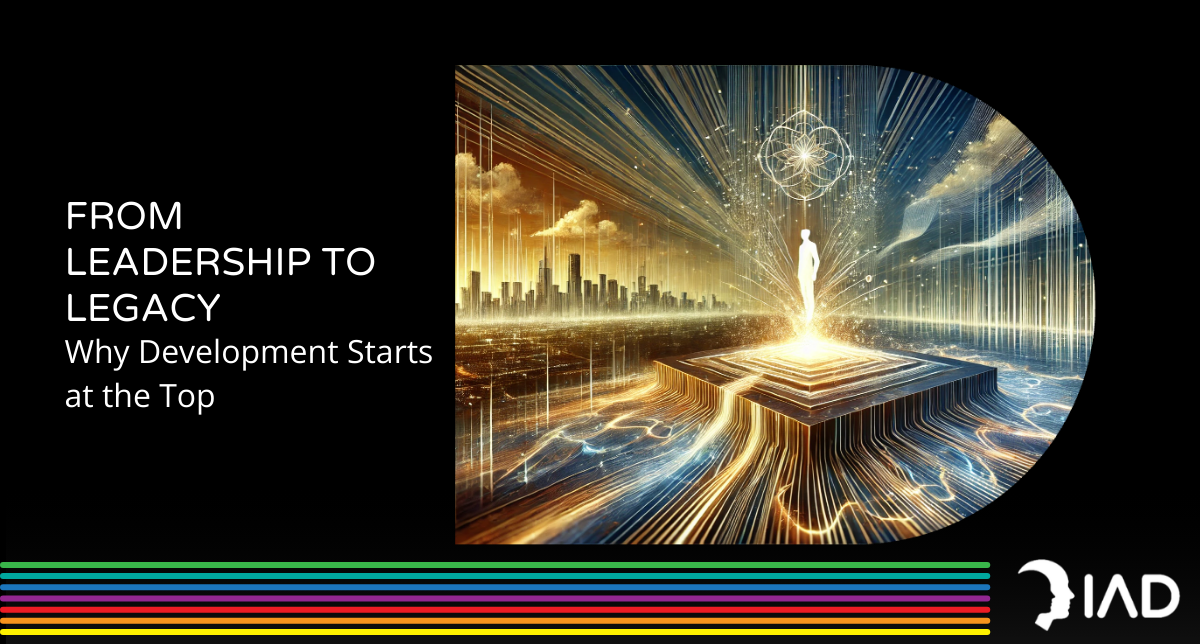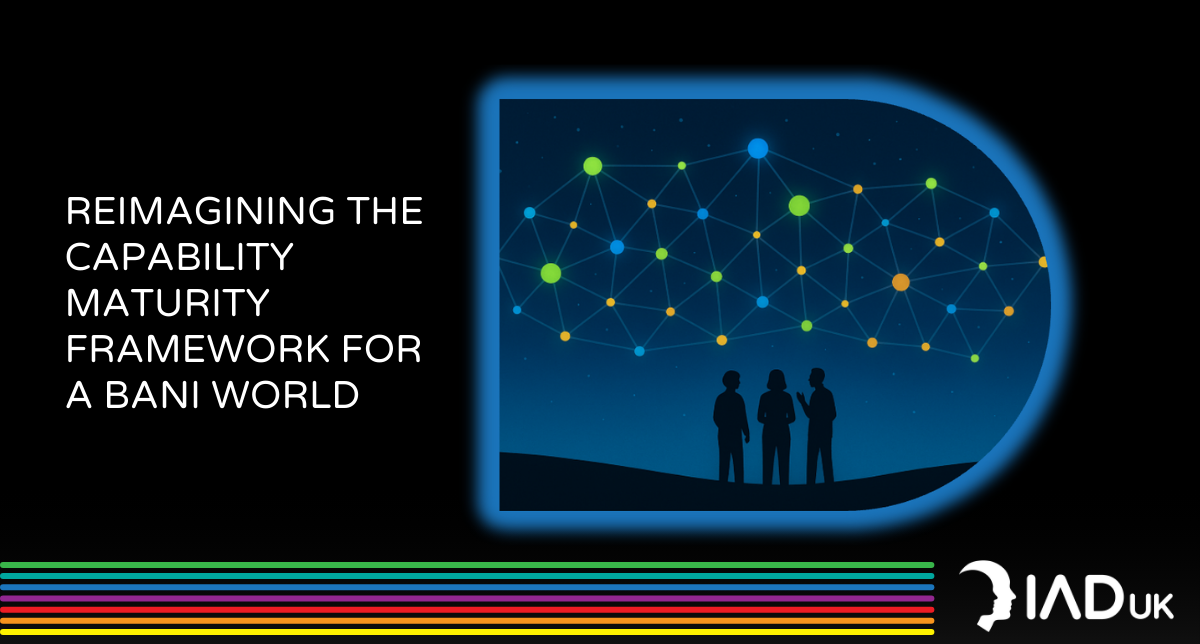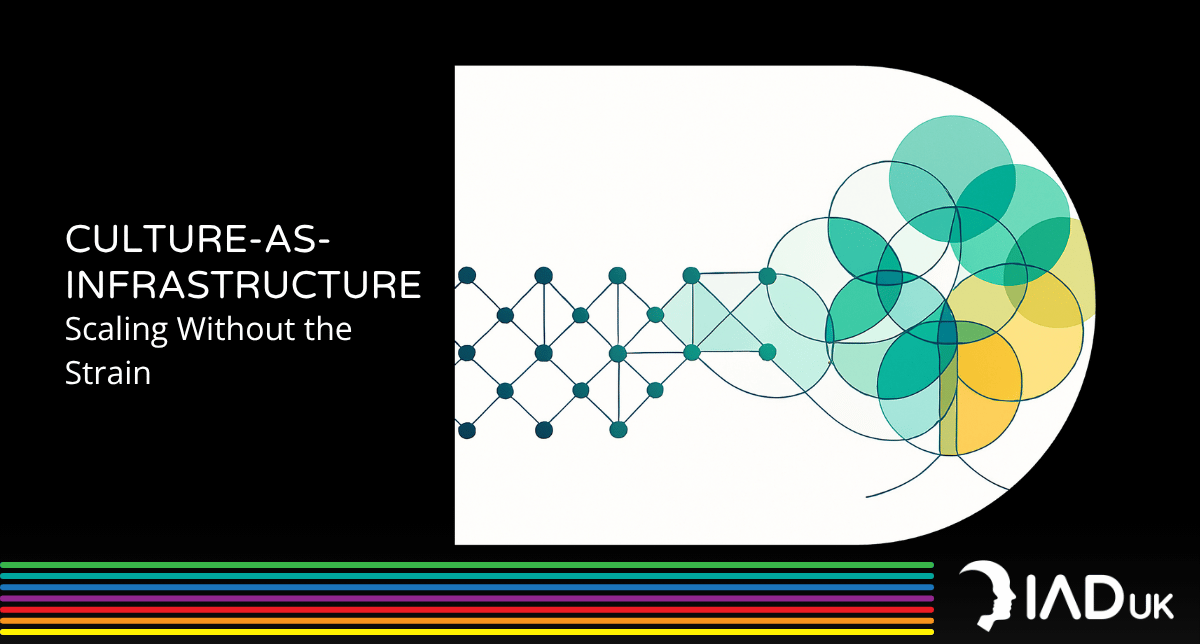From Leadership to Legacy
Why the Future of Your Organisation Depends on Leaders Who Think Differently

The difference between a thriving organisation and one that struggles isn’t just strategy—it’s leadership. Leaders shape culture, decision-making, and the ability to navigate uncertainty. Research from McKinsey shows that healthy organisations—those with empowering, decisive leadership—deliver three times the total shareholder returns of unhealthy ones 1. The challenge? Many leadership development programs focus on outdated models that no longer match the complexity of today’s world.
Traditional approaches emphasise authority, experience, and skill acquisition. Yet, as industries become more volatile, interconnected, and unpredictable, these models fall short. The leadership advantage of the future won’t be about knowing more—it will be about thinking differently.
February is often dedicated to leadership development, but most initiatives focus on skill-building rather than cognitive transformation. If a leader’s thinking is outdated, so is the organisation’s potential.
This is where Dynamic Intelligence (DI) comes in. The ability to think with greater Awareness, adaptability, and ethical clarity is what separates leaders who react from those who reshape the future.
So, how do we develop leaders who don’t just manage the present but create lasting legacies? It starts with understanding that leadership development is, at its core, thinking development.
Leadership Development is Thinking Development
Leaders don’t just execute strategy; they shape how an organisation thinks. Every decision they make, every behaviour they model, and every priority they set influences the cognitive culture of their teams. Yet, most leadership development programs focus on what leaders need to do rather than how they need to think.
This is a critical gap. Research has shown that leaders with higher cognitive complexity are better equipped to navigate uncertainty, drive innovation, and build more inclusive and resilient organisations 2, 3, 4. But cognitive complexity isn’t about intellectual horsepower—it’s about Dynamic Intelligence (DI): the ability to be aware of, adjust, and expand one's thinking in response to an ever-changing environment.
The Dynamic Intelligence Development System™ (DIDS™) helps leaders strengthen their cognitive agility, empowering them to:
- Navigate uncertainty with confidence by recognising and challenging their own biases before making key decisions.
- Lead ethically and inclusively by broadening their perspective and increasing self-awareness.
- Create a culture of continuous development by fostering cognitive flexibility in their teams.
Thinking complexity is what separates leaders who react from those who reshape the future. If leadership sets the cultural and strategic trajectory of an organisation, then investing in cognitive leadership isn’t just beneficial—it’s essential.
But how exactly does leadership thinking shape the long-term success of an organisation? The answer lies in the leadership cascade effect.
The Legacy of Leadership: Why Development Starts at the Top
When you think of the most enduring organisations—those that thrive through disruption and innovation—what do they all have in common? Their leaders don’t just respond to challenges; they proactively shape cultures that adapt, grow, and evolve. This cultural shaping starts at the very top, creating what can be described as the leadership cascade effect 5
At its core, the leadership cascade effect describes how the thinking and behaviour of leaders influence not just their direct reports but ripple through the entire organisation. A leader’s ability—or inability—to think adaptively and ethically establishes unspoken norms: How do we solve problems here? How do we manage change? Do we foster innovation or play it safe? These norms define an organisation’s capacity to weather complexity and remain competitive.
The consequences of this ripple effect are profound:
- Leaders who model adaptive thinking create cultures where innovation thrives.
- Leaders who operate with ethical clarity foster trust and psychological safety, critical for collaboration and inclusivity.
- Leaders who embrace dynamic decision-making instil resilience, ensuring their organisations can pivot under pressure.
However, leaders who operate on autopilot—guided by habitual, reactive thinking—risk embedding rigidity into the organisation. In these cases:
- Biases flourish, limiting creativity and inclusivity.
- Decision-making slows, reducing agility in volatile environments.
- Employee engagement drops, leaving organisations vulnerable to attrition and stagnation.
The Dynamic Intelligence Development System™ (DIDS™) provides leaders with the tools to disrupt these negative cascades by actively increasing their awareness and thinking complexity. This doesn’t just enhance individual performance; it rewires the organisation’s approach to problem-solving, collaboration, and innovation.
What sets truly transformative leaders apart is their ability to create environments where every team member—from the front lines to the C-suite—feels empowered to think dynamically. But how can leaders start building this capacity? It begins with three actionable steps
Helping Leaders to Develop Dynamic Intelligence
1. Challenge Your Cognitive Intention Biases
Cognitive Intention biases shape how you habitually perceive and respond to situations. These biases—rooted in default thinking patterns—act as filters, influencing decision-making, problem-solving, and how you engage with others. For example, a leader with an internal frame of reference bias might overly rely on their own judgment, missing valuable external input, while an external frame of reference bias could lead to over-dependence on others’ opinions.
To develop Dynamic Intelligence, leaders must first identify and challenge these ingrained Cognitive Intentions. Start by:
- Mapping your Thinking Style with tools like the DIDS™ cognitive profiling process to uncover which biases dominate your decision-making.
- Engaging in reflective practices to monitor how these biases show up in key moments.
- Experimenting with alternative Cognitive Intentions. For example, consciously shifting between internal and external reference points to achieve a more balanced response.
By addressing Cognitive Intention biases, leaders unlock the flexibility to think beyond habitual patterns, allowing for more intentional and adaptive choices.
2. Embody Dynamic Leadership
Dynamic Leadership goes beyond simply adapting to changing circumstances—it involves developing the flexibility to reshape not just strategies, but also your own identity as a leader. Leaders with high Dynamic Intelligence are capable of stepping outside fixed roles or personas, embracing new ways of thinking, and responding authentically to the demands of each unique situation.
To lead dynamically:
- Redefine yourself as the situation requires. For example, a leader may need to embody decisiveness in one moment but vulnerability in another.
- Prioritise identity flexibility: Reflect on how your leadership style might need to evolve to meet the needs of your team or organisation.
- Model dynamic thinking by encouraging your team to question assumptions, explore alternatives, and challenge the status quo—starting with yourself.
Dynamic Leadership inspires trust and creativity because it demonstrates a willingness to evolve. When leaders embrace this mindset, they create a culture of openness, adaptability, and growth.
3. Create a Culture of Thinking Development
Leadership isn’t just about your growth—it’s about enabling others to grow alongside you. Organisations that prioritise continuous cognitive development are more resilient, inclusive, and innovative.
To build this culture:
- Embed constructive challenge into team discussions. Encourage debate and exploration of alternative perspectives, even when it’s uncomfortable.
- Use DIDS™ principles to implement team developmental coaching, helping groups collectively enhance their thinking agility.
- Reward not just outcomes but how decisions are made. Recognise employees who demonstrate thoughtful, ethical, and adaptive decision-making.
When every team member is encouraged to think more dynamically, the result is an organisation capable of thriving in even the most uncertain conditions.
Elevate Leadership Development with DIDS™
Leadership isn’t static—it’s a dynamic, evolving process that requires continuous growth and reinvention. Leaders who embrace Dynamic Intelligence don’t just navigate complexity; they shape their organisations to thrive in it. But lasting change requires intentional action, and that starts with a commitment to rethinking leadership development.
By adopting the Dynamic Intelligence Development System™ (DIDS™), organisations can build leaders who:
- Think and act with greater awareness, adaptability, and ethical clarity.
- Model transformative behaviours that inspire teams to embrace innovation and inclusivity.
- Foster a culture where continuous thinking development drives resilience and long-term success.
The time to act is now. As industries grow increasingly volatile, the organisations that will excel are those led by individuals equipped to think beyond conventional frameworks.
Are your leaders ready?
The legacy of your organisation begins with the way your leaders think today.
Will they react to the present or reshape the future?
The choice is yours.
Book a consultation to elevate your leadership development strategy and learn how DIDS™ can reshape your organisation’s future.
Alternatively, why not download our comprehensive brochure




